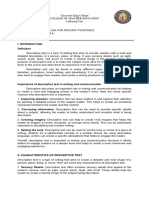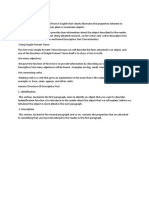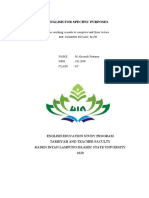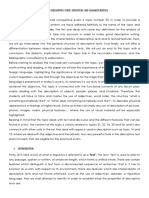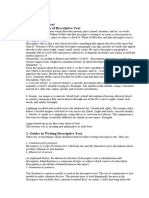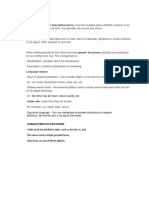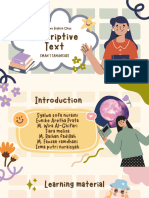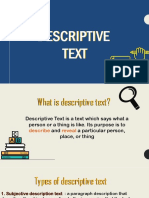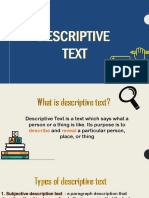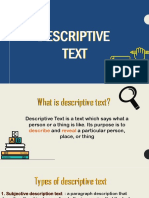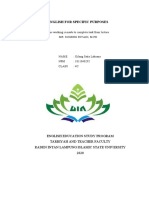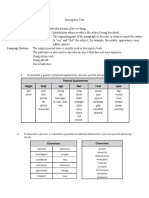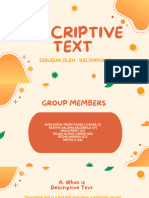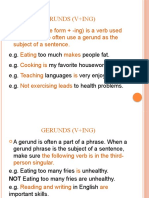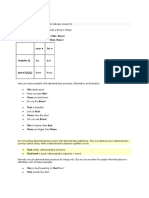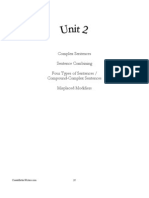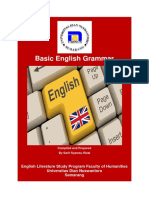0% found this document useful (0 votes)
9 views17 pagesDescriptive Text Power Point
The document outlines a class agreement emphasizing politeness, respect, and proper communication during discussions. It also presents learning objectives focused on understanding and creating descriptive texts, detailing their purpose, characteristics, structure, and language features. Descriptive texts aim to vividly portray subjects using sensory language and rich vocabulary to enhance reader engagement and understanding.
Uploaded by
henimuliyani89Copyright
© © All Rights Reserved
We take content rights seriously. If you suspect this is your content, claim it here.
Available Formats
Download as PPTX, PDF, TXT or read online on Scribd
0% found this document useful (0 votes)
9 views17 pagesDescriptive Text Power Point
The document outlines a class agreement emphasizing politeness, respect, and proper communication during discussions. It also presents learning objectives focused on understanding and creating descriptive texts, detailing their purpose, characteristics, structure, and language features. Descriptive texts aim to vividly portray subjects using sensory language and rich vocabulary to enhance reader engagement and understanding.
Uploaded by
henimuliyani89Copyright
© © All Rights Reserved
We take content rights seriously. If you suspect this is your content, claim it here.
Available Formats
Download as PPTX, PDF, TXT or read online on Scribd
/ 17







